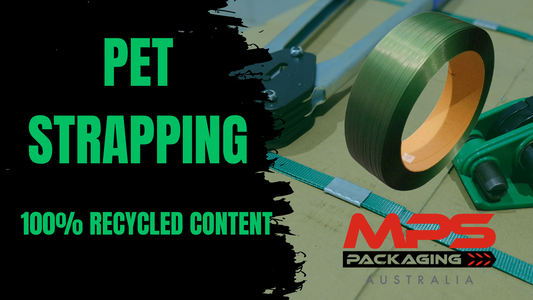At MPS Packaging Australia, with nearly 50 years in the industry, we've had the privilege of selling and repairing every major manufacturer's battery strapping tools.
Over the years, this extensive experience has provided us with deep insights into the strengths and weaknesses of various designs.
In this post, we’ll explore why the STL-500 has risen above the rest and how its unique design could be the solution your business needs.
Understanding Battery Strapping Tool Designs
Battery strapping tools come in various designs, but they generally fall into two main categories:
Type A: Single Motor – One Motor Drives Tension and Welding
This category includes three variations:
- Full Single Motor: A single motor drives tension, welding, and the welding press.
- Servo/DC Motor Assist (Single Shaft): The main motor drives tension and welding via a single shaft, while a servo motor presses the welding arm.
- Servo/DC Motor Assist (Twin Shaft): Similar to the previous design, but with a twin shaft configuration.
Type B: Dual Motor – Separate Motors for Tension and Welding
This type has two variations:
- Twin Motor with Servo Assist: One motor drives the tension, while another drives the welding, with servo assist for welding.
- Twin Motor without Servo Assist: These tools typically do not have an automatic mode, meaning there’s no automatic drive for the weld mechanism.
Why Do These Designs Matter?
Much like high-end cars such as BMW or Mercedes, increased complexity in design often leads to increased maintenance and cost. Let’s delve into how this applies to battery strapping tools.
Twin Motor Designs
Twin motor battery strapping tools are among the simplest.
The tension motor drives the feedwheel through a small series of gears, while the welding motor drives the welding almost directly.
While simple, this simplicity comes with a downside: vibration. When the welding motor is engaged, vibrations from the welding arm are transferred throughout the tool, leading to several issues:
- The welding motor can break or spin itself out.
- Small bolts holding the motor in place may come loose.
- Solder connections on the battery and motor terminals may break.
Single Motor, Single Shaft Designs
In a single motor, single shaft design, power is sent through a single shaft.
The motor spins in one direction to drive the feedwheel and in the opposite direction to drive the welding.
This design typically includes a series of planetary gears, one-way bearings, and a belt drive for the welding arm. The belt drive has several advantages:
- Soldering rarely breaks from motor or battery contact, making the tool more durable.
- Motors tend to last longer compared to those in twin motor designs.
- Bolts rarely become loose over time, making the tool very stable.
While there are a number of advantages of these tools, there’s a trade-off - one-way bearings can seize, jam, or stop functioning properly, requiring the entire tool to be disassembled for replacement.
The STL-500: A Game-Changer in Battery Strapping Tools
The STL-500 is unique in that it’s the only single motor, twin shaft tool with a belt drive.
Single motor with twin shafts means that one shaft coming out each side of the motor reduces the amount of parts. Until now, the welding of these tools was driven by a series of gears. The STL-500 belt drive simplifies this design again and reduces vibration through the tool.
. This innovative design offers several key benefits:
- Reduced Maintenance: The absence of planetary gears and one-way bearings significantly lowers maintenance needs.
- Vibration Absorption: The welding belt absorbs vibrations during welding, extending motor life and reducing the need for more frequent maintenance which other designs see.
Why does this matter?
The belt drive in the STL-500 offers a distinct advantage over gear or direct drive systems by significantly reducing vibration, which is crucial for the longevity and reliability of the tool.
Vibration is a significant concern for battery strapping tools because it accelerates wear and tear on the tool's components.
When vibrations are transferred throughout the tool, they can cause critical parts like motors, bolts, and solder connections to loosen, break, or fail prematurely.
This not only leads to frequent maintenance but also increases the likelihood of unexpected breakdowns, resulting in costly downtime and repairs.
Reducing vibration is essential to prolonging the life of the tool, ensuring stable operation, and minimising the need for constant maintenance.
In summary, our extensive data from thousands of tools over the past 20 years has shown that designs driving the welding arm directly lead to increased vibration, which in turn necessitates more frequent maintenance and part replacements. The STL-500 addresses these issues with its twin shaft and belt drive design, making it a robust and reliable choice for high-volume and demanding environments.
If you’ve been facing challenges with the maintenance of your battery tools, especially in rough and high-volume settings, reach out to MPS Packaging Australia. Let’s discuss how the STL-500 can enhance your operations and reduce downtime.












